High Speed Broadband: Definitions Matter

Data
FCC Broadband Deployment Data
Source
Broadband Deployment Data from FCC Form 477
Find on PolicyMap
- Quality of Life
- Computer and Internet Access
Living through the pandemic these last two years shed light on and magnified inequalities that exist across communities in the US. Chief among them – access to the internet. From telemedicine to remote learning, to work-from-home opportunities, to vaccine availability, access to reliable, fast internet has impacted how well households were able to weather the strains of the pandemic. New research from the University of Chicago goes a step further and suggests that one of the factors most correlated with death due to COVID-19 was access to the internet. The Bipartisan Infrastructure Deal and the funding it devotes to improving internet access offers us the opportunity to correct for this. Ensuring this funding targets those who need it most requires that any strategy be driven by geographic specific data, namely high-speed broadband availability and the socio-economic conditions of the people it serves.
Defining High-Speed Broadband
The Bipartisan Infrastructure Deal allocates $65 billion to “expand broadband in communities across the U.S., create more low-cost broadband service options, subsidize the cost of service for low-income households, and provides funding to address the digital equity and inclusion needs in our communities.” Of this, $43 billion is going directly to states and territories to specifically focus on funding high-speed broadband for households and businesses that lack it. In the end, the administration’s goal is universal broadband access.
How the FCC defines “high-speed” will have a significant impact on which communities are considered unserved and prioritized for funding. Currently, the FCC defines high-speed broadband as a minimum of 25 megabits per second for download and a minimum of 3 megabits per second for upload. These definitions were created 6 years ago and are currently the subject of much debate. Many are asking Congress to change the definition to reflect the fact that with multiple members of households using the internet, the speeds used to define whether an area is served or not are no longer relevant. They argue that the new definition should be at least 100 megabits per second for both download and upload.
Looking at just download speeds across the US, we can easily see just how much this definition matters. The red on the map below shows places with less than 25 megabits per second for download. These are areas that would currently be considered unserved by the FCC and in need of broadband investments.
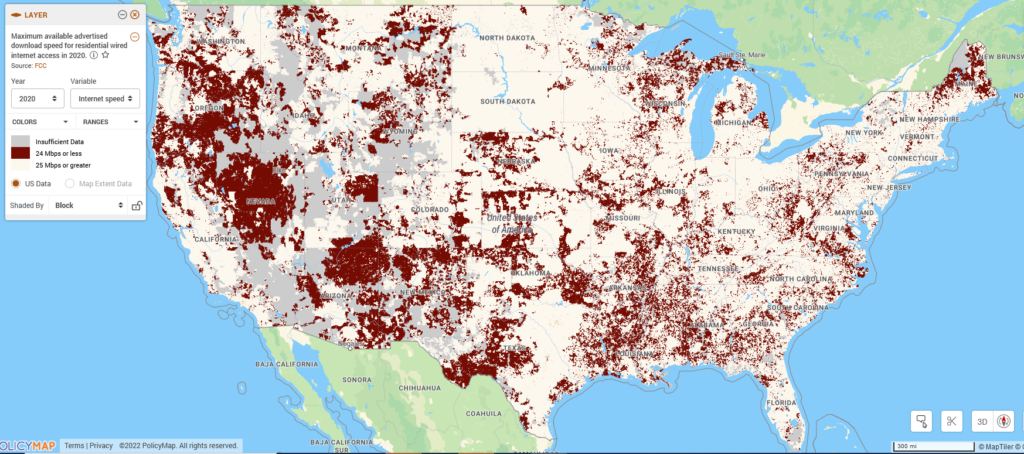
Changing the threshold on the map to show areas with less than 100 megabits per second for download reveals far more of the country, now in red, would be considered unserved and in need of broadband investment.
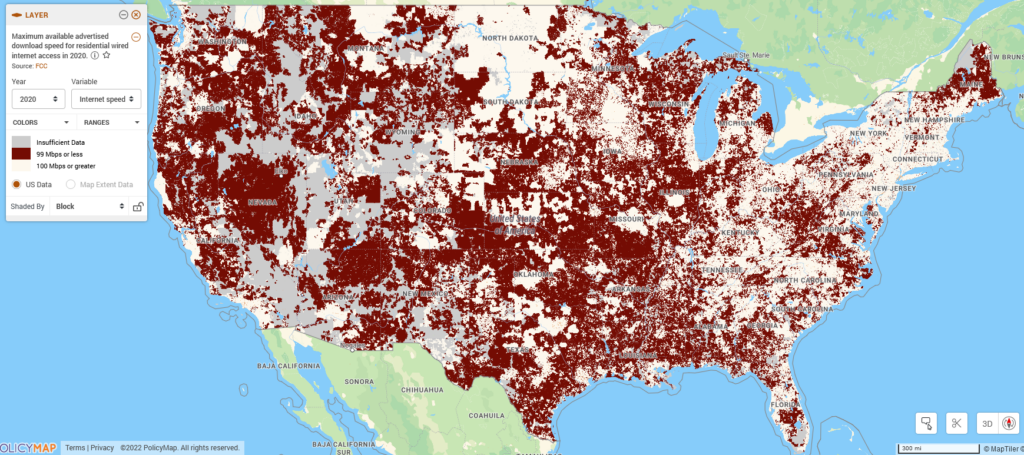
Digging deeper, a place like York County, PA looks well served when using the current FCC definition.
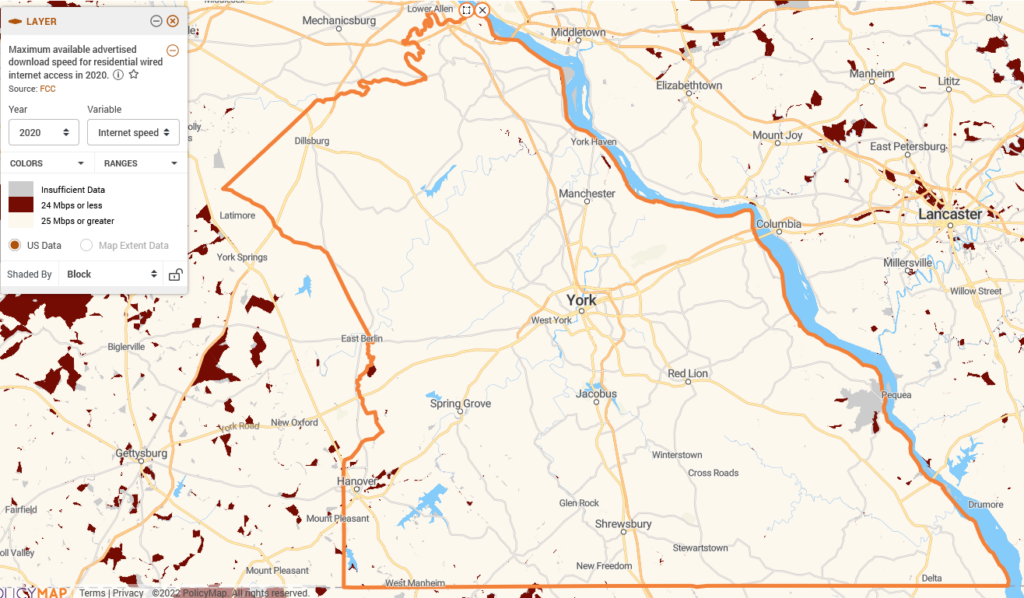
But change the definition and the thresholds on the map and swaths of York County are unserved and in need of investment.
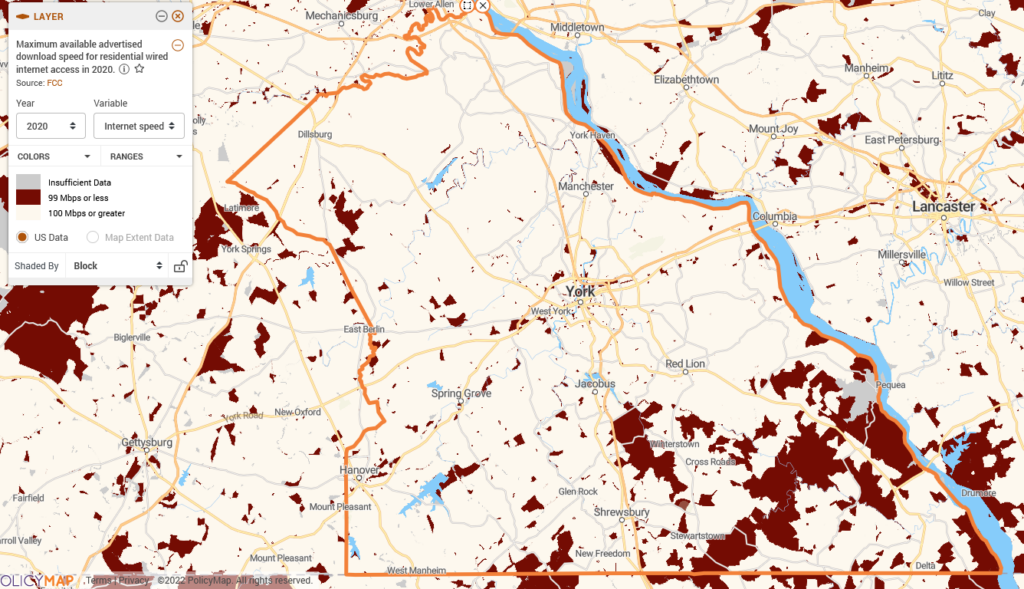
High-Speed Broadband and Vulnerable Populations
Which definition of high-speed is ultimately chosen as the means to identify areas in need of broadband investment is especially important for the country’s most vulnerable populations.
For example, of the 886,667 people who live in South Dakota as of the Census 2020, approximately 245,907 live in areas considered socially vulnerable (highlighted in blue below). These socially vulnerable areas are defined by the Centers for Disease Control using an index comprised of four categories of vulnerability: socioeconomic status, household composition and disability, minority status and language, and housing and transportation.
If the FCC maintains its current definition of high speed, about 13% or 32,666 of the people living in socially vulnerable areas in South Dakota would be considered in need of high-speed internet. These areas in need are shown in hatch marks on the map below.
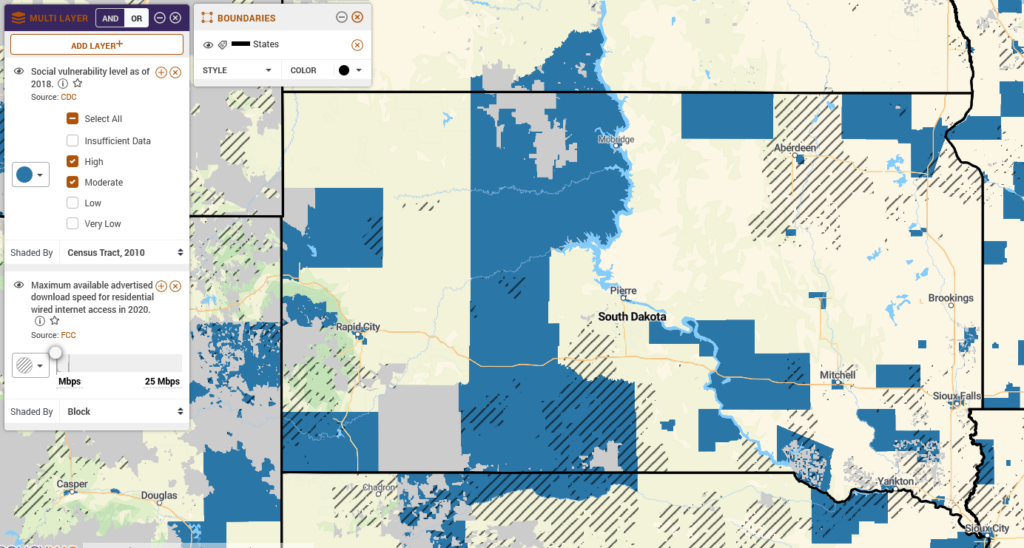
Use the expanded definition and almost three times the number of people (89,459) living in these socially vulnerable areas would be considered in need. Again, the hatch marks note the areas in need but far more overlap with vulnerable communities shaded blue.
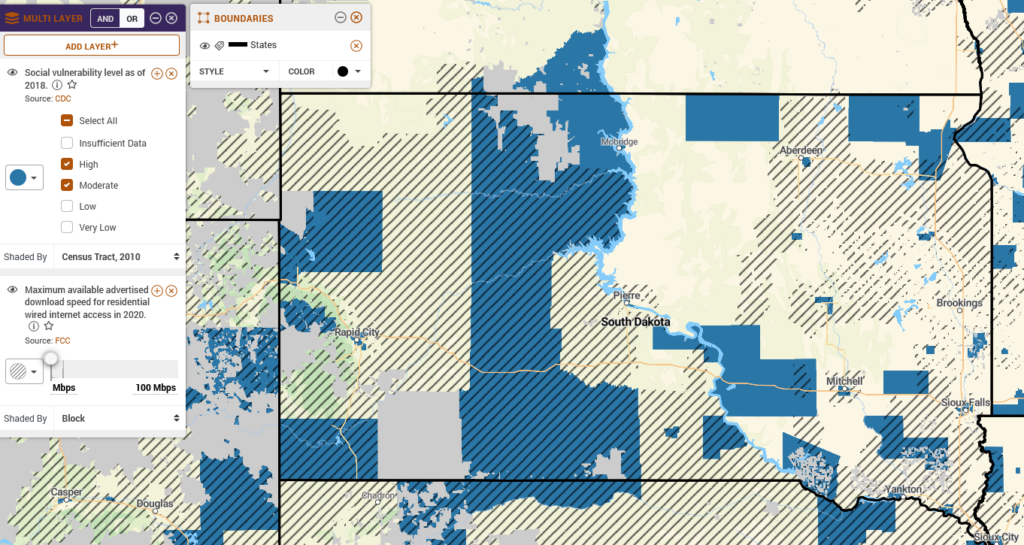
As each state plans for how and where to deploy these new resources, additional data regarding where households do not have access to a computer at home, where populations reside who may need more help learning how to use the internet, and where high concentrations of children and large families reside who may have higher internet usage demands than other households can help guide planning.
An opportunity exists to bridge the digital divide with this influx of investment dollars and data should be the foundation for that bridge. Learn more about how PolicyMap can help by contacting us.